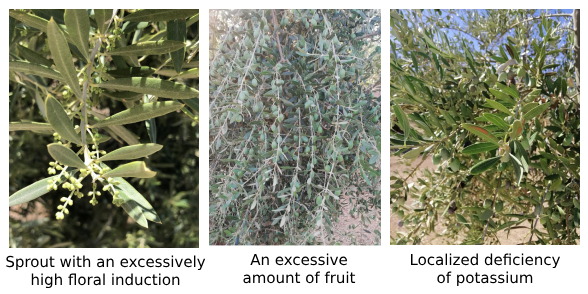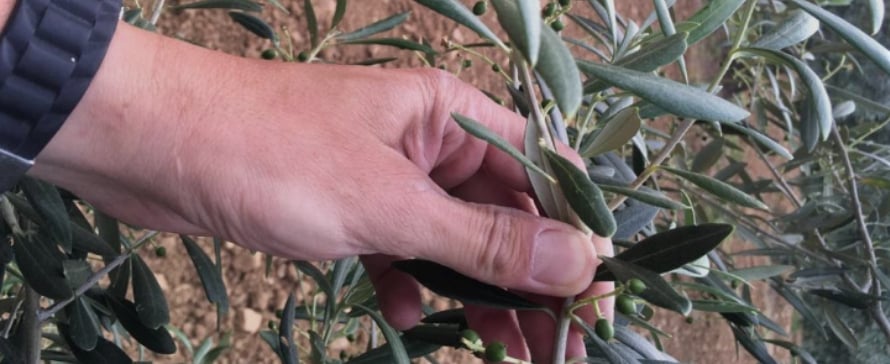Listen to this article
In order to explain Olive Tree pruning and Alternate Year Bearing, we need to consider each of the yearly seasons.
We’ll begin with Spring
The unpruned Olive tree: Very dense, with many buds, that become inflorescences. Because all the branches are competing with each other, each branch receives less light and a smaller supply of sap from the root. The olive wood also affects this, as it takes up nutrients as well.
There will be little vegetative growth, and because of this there will be fewer blossoms the following year.
The pruned Olive tree: New shoots receive much light, and a good flow of sap, with less wood taking up photoassymilates that produce adult leaves.
The olive tree is able to produce vegetative growth as well as inflorescences—vegetative growth that will support the blossoms of the following year.
Summer
The unpruned olive tree has set a large number of fruits. Each fruit has a seed, that emits hormones that go to the buds that will blossom the following year. These hormones send the message to blossom to the leaf, not to the flower. The greater number of fruits there are, the greater the total quantity of this hormone there will be.
The more there is to supply, the more water demand there is, and the shoots grow even less. The wood continues to compete with the shoots and with the fruits themselves, and neither structure grows as much as it could.
The pruned Olive tree: has fewer fruits, so it emits less hormones that inhibit a return bloom. The fruits grow more quickly, so the total weight of unripe fruits for pruned and unpruned trees is similar.
Fall
Olives avidly absorb elements, so there is no vegetative growth at all.
On an unpruned olive tree, the olives go to the end of the shoots, so the leaf-to-pulp ratio of the shoot is low, and the leaves of this shoot, upon exporting nutrients to the fruits, end up nutrient-depleted, since few leaves have to supply many fruits.
The olives receive a deficient flow of mineral nutrients and photoassymilates, and therefore do not accumulate their full capacity of biomass, so they stay small and have a low fat yield.
The shoots of the pruned olive are able to produce vegetative growth before the fruit in spring and summer. They have a good amount of leaves that can pass nutrients to the olives, so the olives can develop into a good size with a good fat yield, and the level of nutrients left in the leaves is not bad.
From this moment on, the total fruit weight in the olive tree is comparable between pruned and unpruned trees.
Winter / Spring
After the harvest, the unpruned olive tree is left depleted of nutrients. The scarce flower buds are also aware of this situation, and the message to blossom is directed even more to the leaves, not to the flower.
As we saw, the unpruned olive tree has a large proportion of olives, and a low proportion of leaves. So after the harvest, it is left with a very low leaf-to-wood ratio that makes it difficult to recuperate the foliar mass, which leads to a production of short sprouts with small leaves.
We saw that the pruned olive tree has longer shoots before fruits, i.e., a high leaf-to-pulp ratio, so it was not left low in nutrients, and thus does not send negative messages to the buds regarding return bloom. Thus, with these shoots, there will be some blossoms that produce both flowers and return blooms.
Following years
The back and forth effect of a large harvest followed by a poor harvest is minimized by pruning and other management practices. An olive tree that has no yield one year will have excessive flowering the next. With an average harvest in the off year, or resting year, the blossoming of the on year will not be so excessive.

.png)




